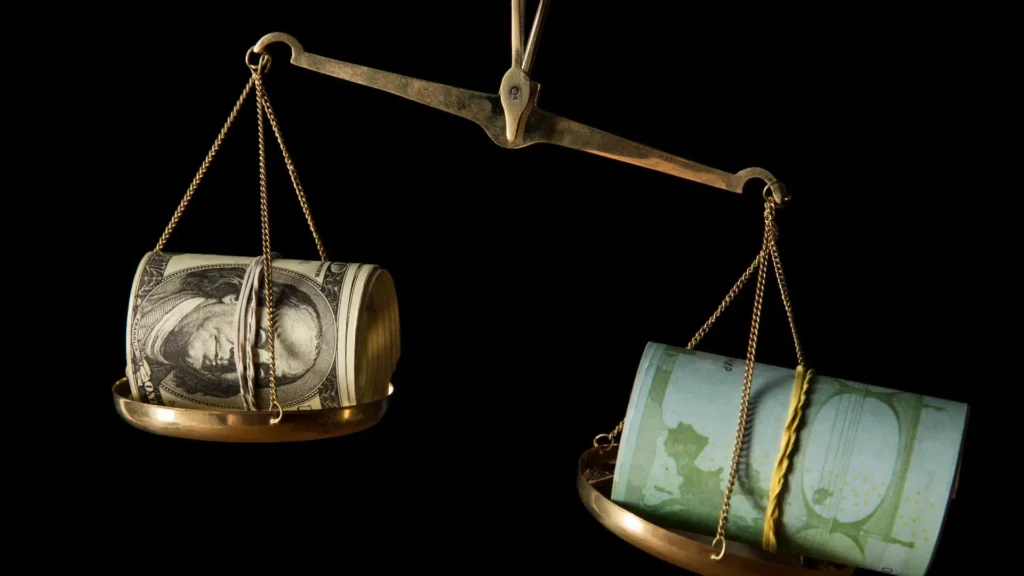Do you ever feel like your cash is gone by morning? One day you are good with your budget, and the next, you are scrambling to make it to the weekend. These quick ups and downs in your cash are called balance swings, and they show more than you might think.
Balance swings tell when and how your cash moves. They show when you spend a lot, how quickly your cash is gone, and whether your ways are good or bad for your money’s health. Ignoring these patterns can trap you. But spotting them early can be possible!
With tools like BudgetGPT, it’s easy to watch these ways. It looks at your daily money changes, marks bad spots, and gives easy tips to keep you on track. In this post, we’ll see what your balance swings say about financial health and how they can guide you to better money control.
What Are Balance Swings?
Bank swings are changes in your bank account over time. They show how your money goes up and down due to things like paychecks, bills, and other purchases. These swings can be big or small and happen often in financial life.
Here are some usual causes of bank swings:
- Paydays: When you get your paycheck, your bank account goes up, and then it goes down as you pay bills.
- Bill Payments: Regular bills like rent, lights, and memberships can make your account dip when due.
- Unexpected Expenses: Things like fixing your car or going to the doctor can make your bank account drop fast.
By knowing these ups and downs, you can handle your money better and not be surprised by big drops in your cash.
Why Balance Swings Matter
When your account balance rises and falls often, it’s more than just numbers, it shows how steady or shaky your money habits are. Let’s look at why that matters.
Indicating Financial Instability
Big ups and downs can show that you’re living paycheck to paycheck or not using your money right. This makes your money life hard to guess and stressful.
Impact on Stress
Worry about whether you can pay bills or handle surprises?. Unstable money makes daily life difficult, making it difficult to focus on school or work.
Increased Risk of Overdrafts
When your bank account gets too low, you risk bank fees or payments not going through. These costs not only take money but can also mess up your bank record or credit score. Here’s How BudgetGPT Can Help You Avoid Overdrafts.
Spending Control Issues
Big bank changes can mean you’re spending too much right after payday, leaving little for the rest of the month. This pattern makes budgeting hard and brings on more money stress.
How to Track and Analyze Your Balance Swings
Once you know about bank swings, tracking and checking them is needed to get your money safe. This isn’t just about watching numbers change—it’s about getting your money to act, seeing what makes the changes, and learning how to keep in control. Here are the steps you can take to start:
Reviewing Account Statements
One easy way to see your bank swings is by looking at your past account actions. Bank apps or online notes let you see your day and weekly balances to spot how your money moves.
Here is what to look for:
- Highs after payday: Check if your balance goes up on a clear day each month, usually after money comes in.
- Lows after bill payments: See if your balance dips soon after rent, memberships, or light bills are paid.
- Weekend costs: Track if weekends make dips because of eating out or shopping.
- Often dips: If your balance dips often, it could show impulse buying or poor planning.
By checking your statements weekly or monthly, you can start to see the usual patterns. This helps you not just see where your money goes, but also when it goes.
Spotting Triggers and Trends
Look at things that lead to big swings in your balance. Some costs are easy to guess (like rent), while others may change each month (like food or fun). Life-related changes, like buying sprees or eating out, can also make your balance change.
Examples of Usual Triggers:
- Rent and tools: These often cause large monthly falls in the balance sheet, especially if they are paid at once.
- Shopping or impulse Buyer: Spending too much on accessories can lead to a surprise balance.
- Seasonal costs: During holidays or trips, expenses can go up, leading to clear banking.
By seeing these patterns, you can plan and make changes to reduce the hit of your money.

What Your Balance Swings Say About Financial Health
Your account stays more than just your money. This reveals your habits and financial health. By tracking that the remaining amount changes every week or month, you can see if you manage your money well or need to be improved. Here is described how to present the signals.
Signs of Instability
If your balance swings are huge and often—such as suddenly dropping to nearly zero after payday or spiking back up only once a month—it may signal financial pressure. These fluctuations usually indicate a pattern in which you’re spending all that you take home too rapidly.
Here are signs of instability:
- Living From Paycheck to Paycheck: If you always wait for the next payday for your bills, it may mean you don’t have any extra money.
- Risk of Overdraft: If the remaining amount is often reduced to zero, you risk paying an additional bank fee.
- Missed Savings Chances: Big swings often mean you’re not saving money well, which makes it hard to have an emergency fund or save for the future.
When your money is unsure, it’s hard to stay ahead. You might miss chances to save, and you’re more likely to face bank fees or use credit cards in emergencies.
Signs of Stability
On the other side, smaller and more steady swings show you’re good with money. If you usually have a bit extra in your account, with bills paid on time and savings growing each month, this shows smart planning.
Here are signs of stability:
- Steady Swings: Your balance moves up and down in a steady way, like getting paid and then paying bills.
- Steady Extra: You always have enough in your account for bills, with some left for surprises.
- Bills On Time: Bills are paid on time, without big ups and downs or overdrafts in your balance.
Knowing the difference between these swings helps you see your money habits and make better choices.
Read: How to Spot and Fix Bad Money Habits with Data
Strategies to Reduce Harmful Balance Swings
Now that you know how to track and look at your balance swings, let’s find ways to make them less harsh. By making your money flow more steady, you can cut stress and avoid bank fees.
Building a Buffer
A top way to cut bad swings is by having a cushion in your account. This cushion helps with ups and downs from surprises or changes in seasons. Try to keep at least a bit more than you need for bills.
Here is how to build and keep a cushion:
- Set a minimum balance goal: Place at least $100- $200 in your checking account at all times.
- Automate savings: Transfer a small amount, such as $10 in a week – every day in savings.
- Use one-time cash wisely: If you get birthday money, a refund, or a bonus, you must enter it as a backup.
Even a small cushion gives you space so your account doesn’t go too low, even with surprise bills.
Smoothing Out Expenses
You can also cut swings by spreading out bill times and setting auto-pay for regular bills. For example, if your rent and bills are due on the same day, it can make your balance drop a lot. Try splitting these across the month.
Here are ways to even your spending:
- Change bill dates: Ask providers to move bills so they’re spread throughout the month.
- Automate fixed expenses: Specify automatic payment for membership, rent, and telephone bills to avoid delayed payment.
- Budget for seasonal costs: Put money in advance for things like winter heating or summer trips.
When the bill is also planned, your account remains stable and your stress decreases.
Monitoring Progress and Adjusting Habits
If you do not monitor, the best budget can be off track. Therefore, it is necessary to regularly review how your balance occurs and make adjustments as needed.
Here are some ways to stay on the path:
- Check weekly trends: Look at your balance high and climb where you can improve.
- Use a notice and reminder: When your balance falls too low or informs when the bill is to be paid.
- Get your habits: If you notice in one area (such as food distribution), you can change some money to another category.
By watching your balance and making small fixes, you can stop big swings before they start—and keep your budget safe.
Conclusion
Your balance swings show your financial health. Tracking these changes helps you understand your spending habits. This can improve your overall financial stability. Whether it is to make a buffer, equalize expenses, or adjust the habits, the goal is to make your finances more stress-free.
With BudgetGPT, tracking your balance gets way easier. It helps you detect the pattern, make better plans, and survive surprises, so you never thought about where your money went. No more guessing. Just simple insights that help you stay in control.
Download the Blitz app and start using BudgetGPT to monitor your balance swings. Your next smart money move could be just one tap away.




